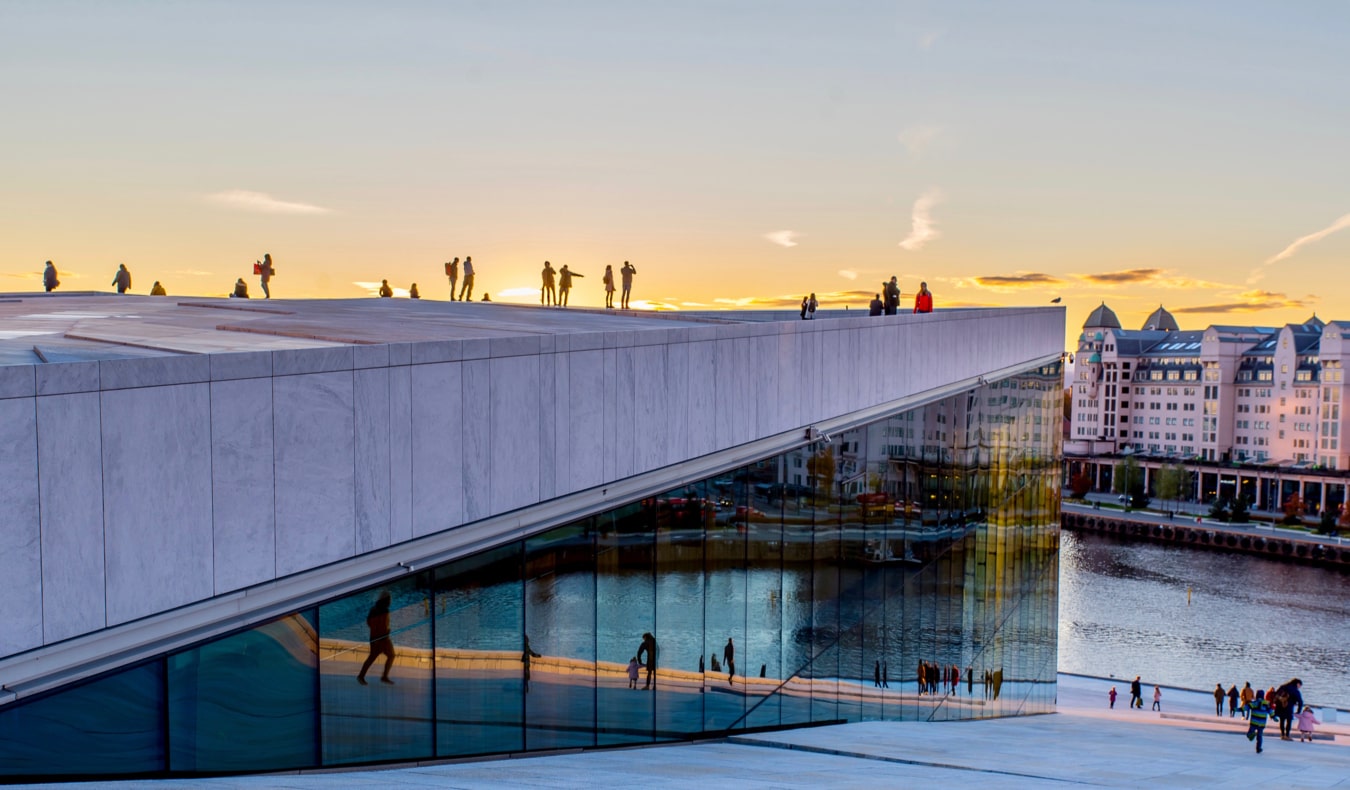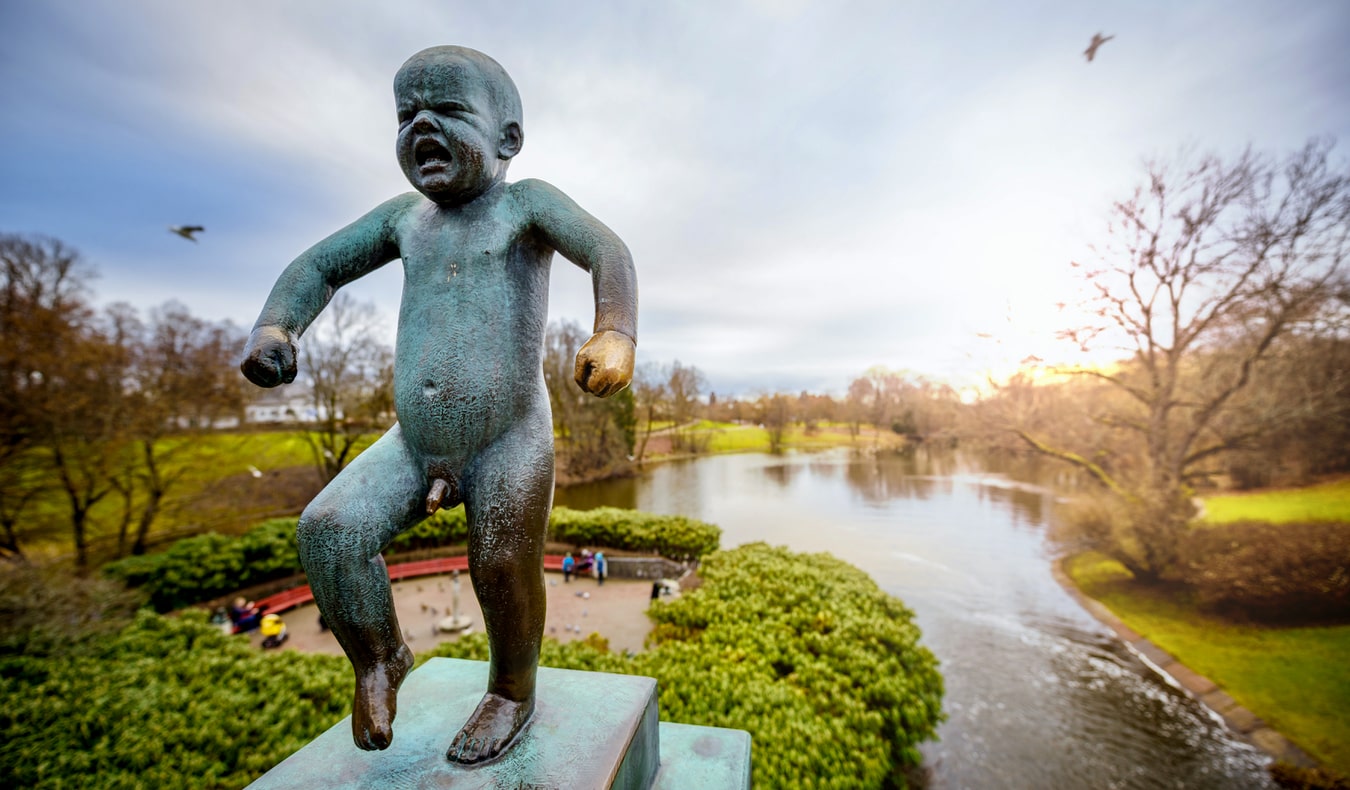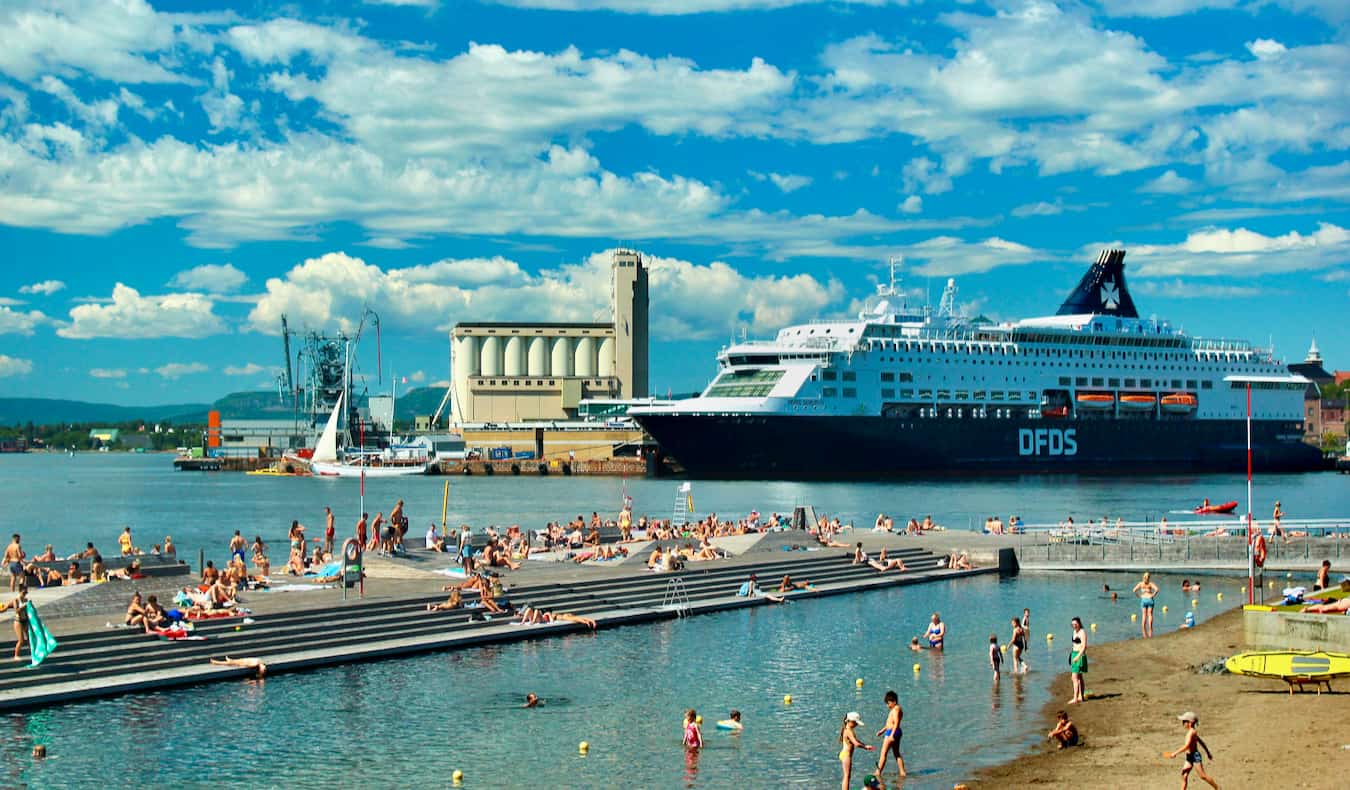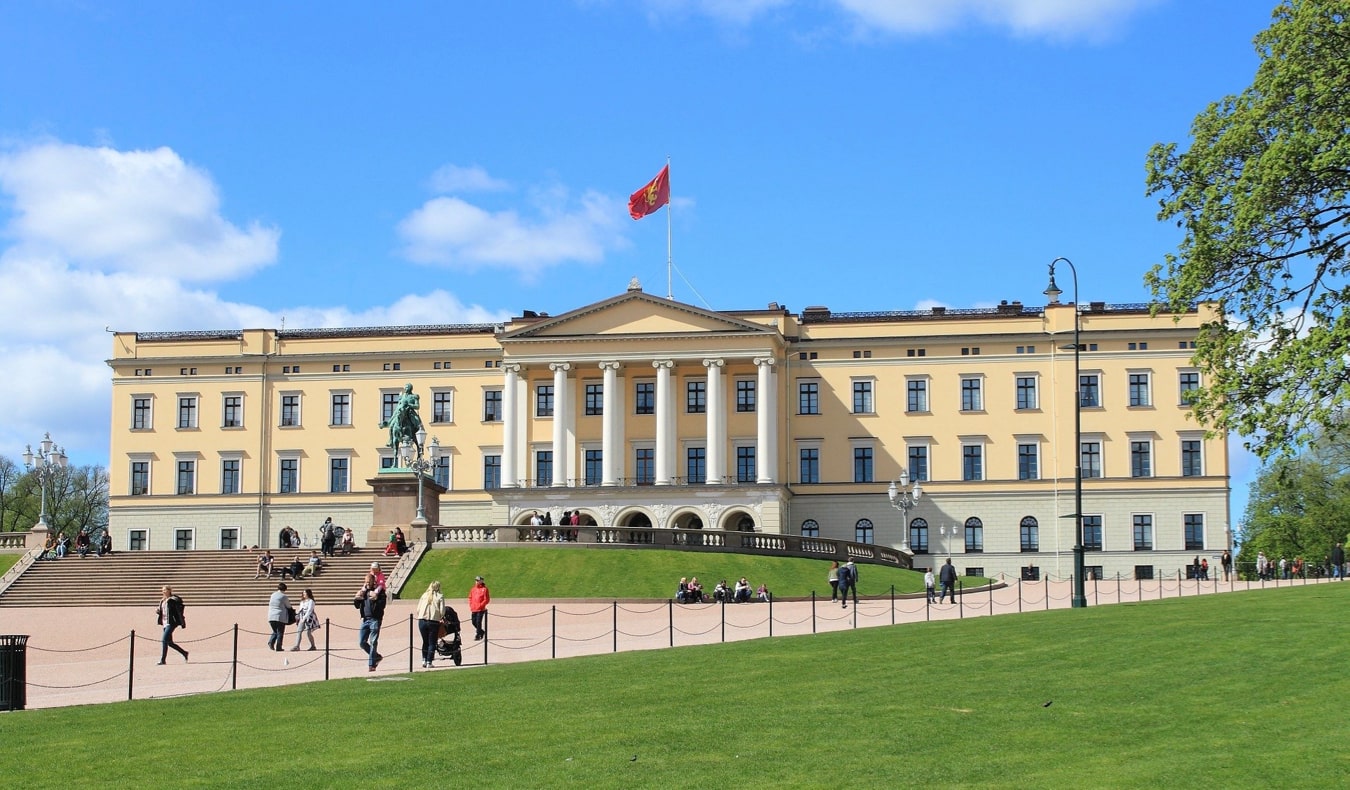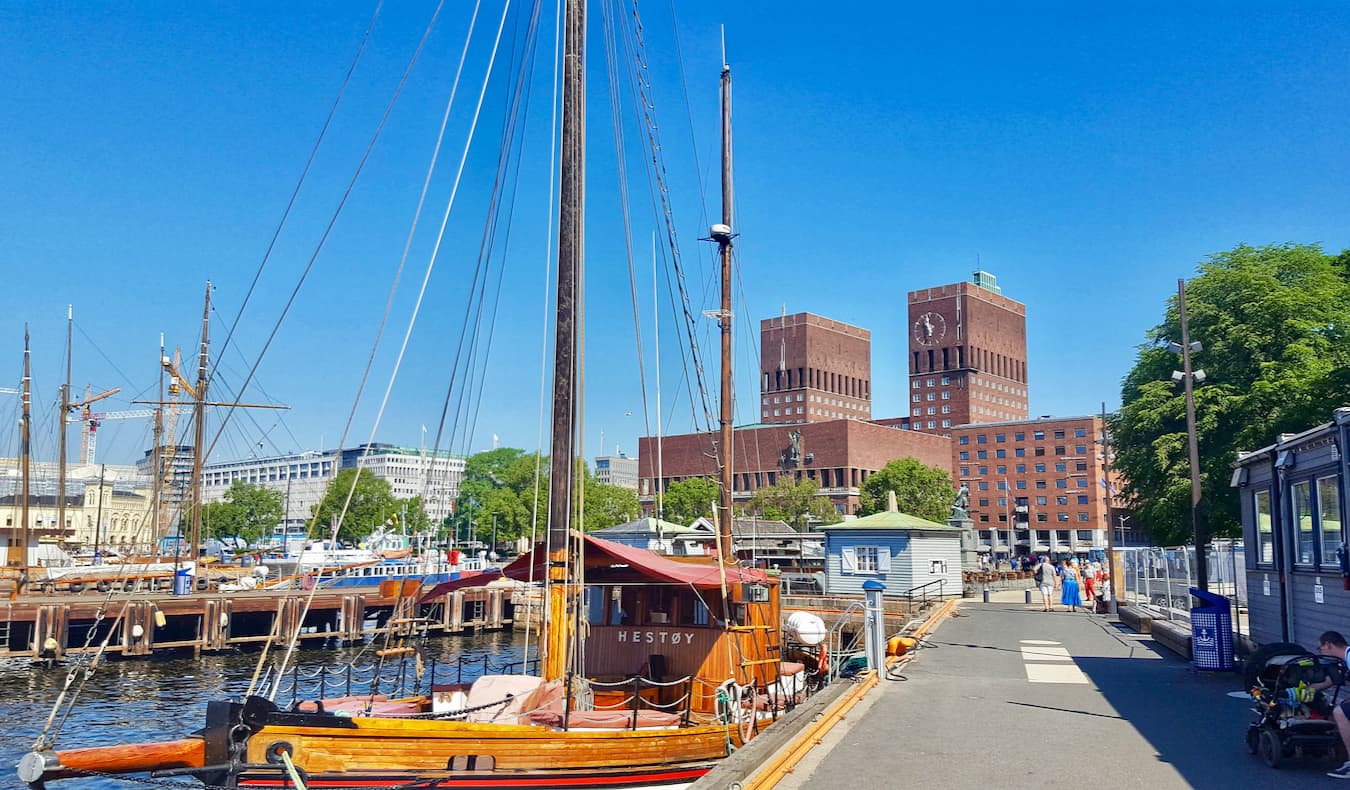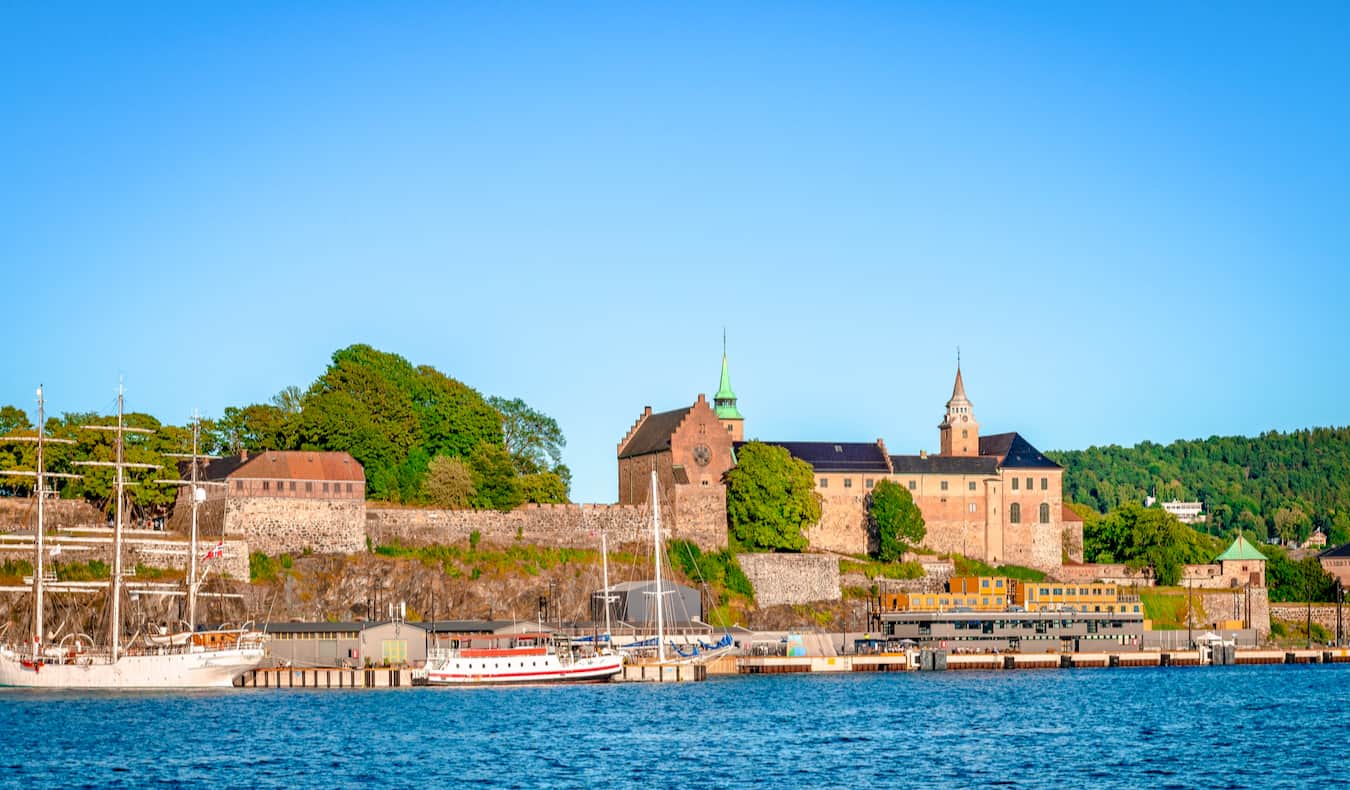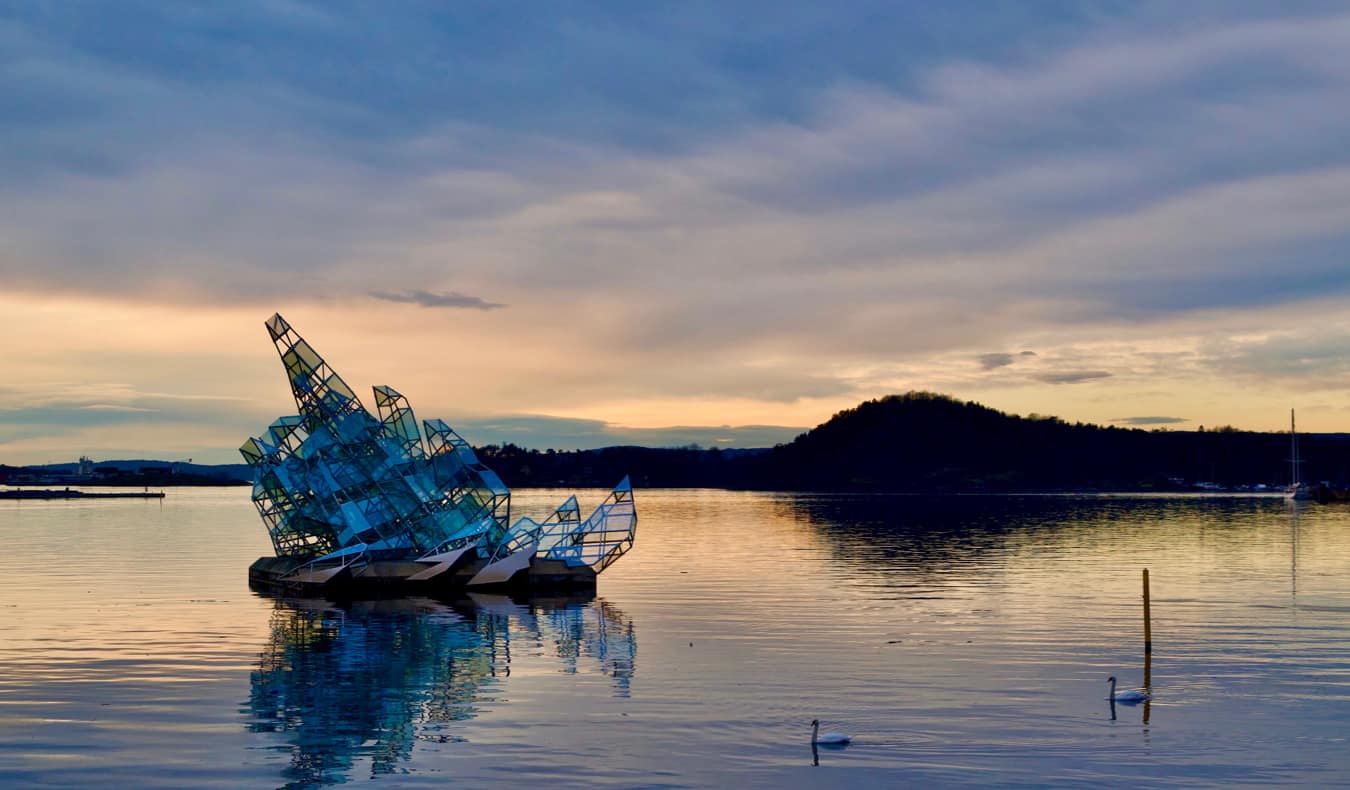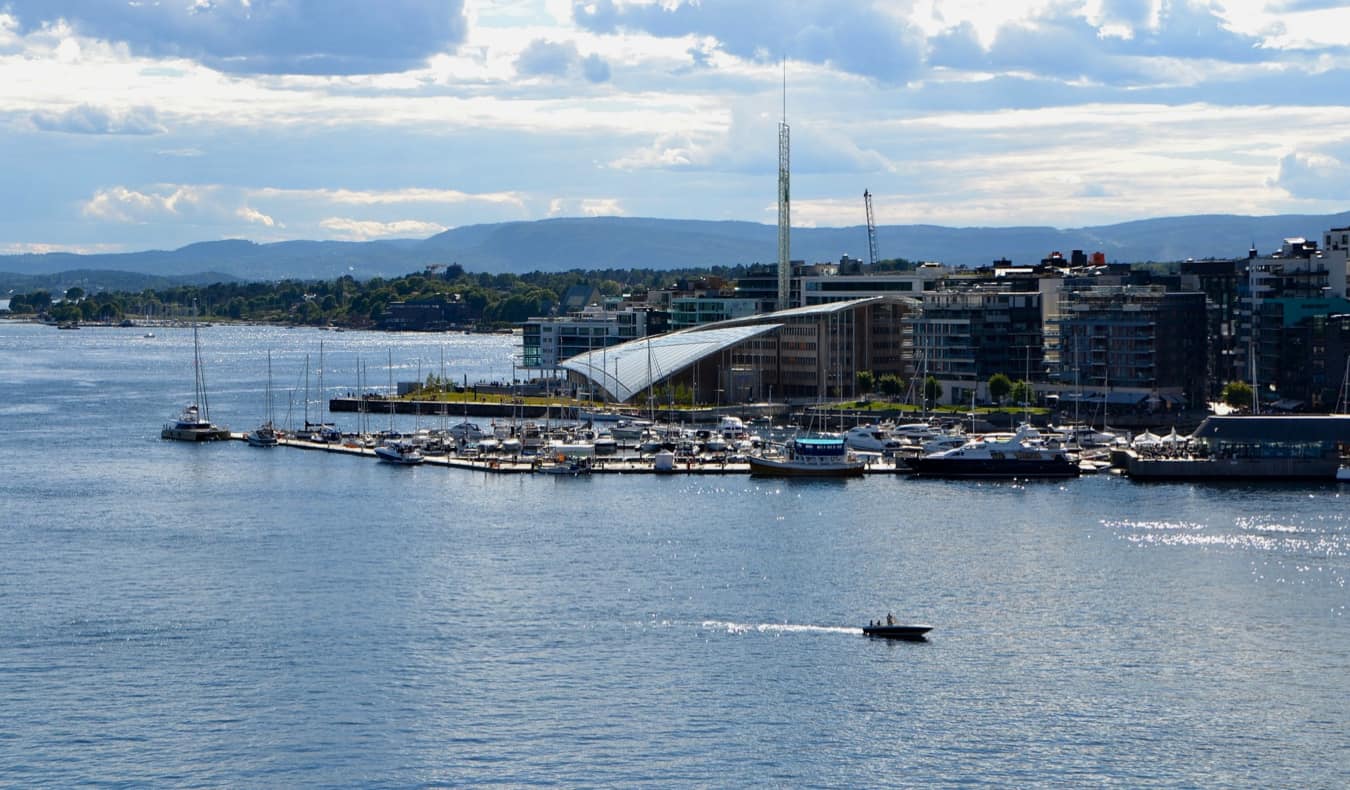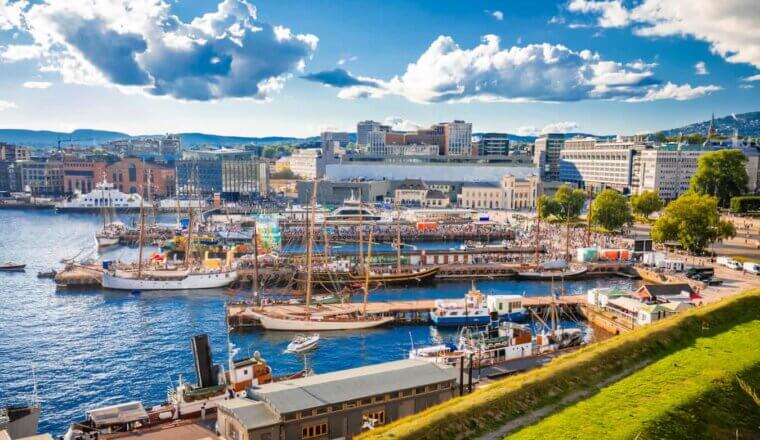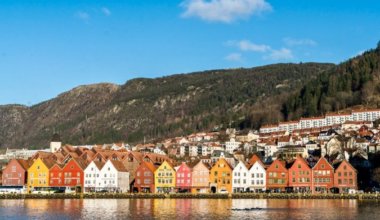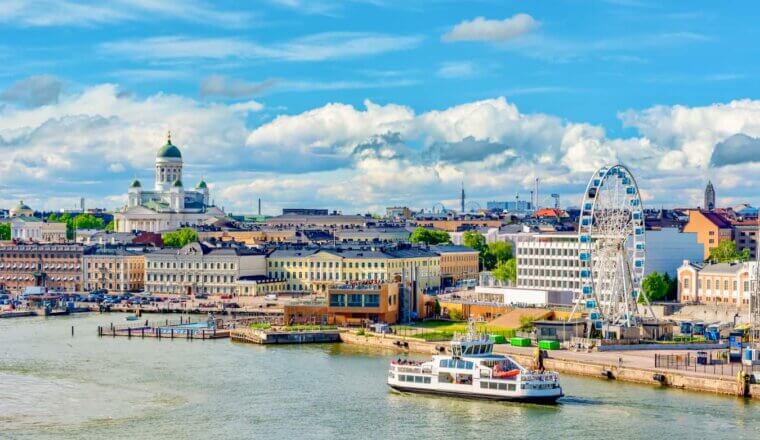
Last Updated: 5/12/23 | May 12th, 2023
Balancing natural beauty, historic architecture, and a modern flair, Oslo, Norway’s beautiful capital, is a city that punches well above its weight.
Founded in 1040, Oslo was established as a Viking trading hub. It continued to grow and prosper over the centuries until 1624 when it was destroyed by a fire. Its name was changed briefly in the 19th century to Kristainia before the city embraced its past once more, renaming the capital Oslo.
Today, Oslo is a small city enveloped by islands and forests. Yet, while small, it’s bursting with things to see and do: there are countless museums, spacious parks, delicious restaurants, and its proximity to nature means there are plenty of hiking and biking trails at your disposal (as well as places to swim).
However, since it’s expensive (it’s one of the most expensive cities in the world), a lot of travelers pass Oslo by.
While a visit certainly will eat into your budget, Oslo is worth it.
To help you plan your trip, have fun, and save money, here is a list of the best things to do in Oslo:
1. Take a Walking Tour
I always start my trips off with a free walking tour. They’re a budget-friendly way to see the main sights, learn a little history, meet other travelers, and get access to an expert local guide who can answer all my questions. Free Tour Oslo organizes daily tours that last 90 minutes. It’s a solid introduction to the city and covers all the main highlights. Just make sure to tip the guide when the tour ends!
You can also take a bike tour around the city if you want to cover more ground. And there are food tours available too if you’re a foodie like me.
2. Enjoy the View at the Opera House
This massive contemporary theater sits on the water and is home to the national opera and ballet. Opened in 2007, the building itself is composed of multiple flat levels that essentially act as small plazas, allowing visitors to walk on the roof and enjoy the view of the harbor and city. It’s a popular spot to watch the sunset when the weather is nice. Check the website to see what performances are happening during your visit.
Kirsten Flagstads Plass 1, +47 21 42 21 21, operaen.no. Box office open Monday-Saturday 11am–6pm, and Sundays 12pm–6pm. Admission to performances varies. Daily guided tours are available in English at 1pm Monday-Saturday and Sundays at 2pm. They last 50 minutes and cost 130 NOK.
3. Relax at Aker Brygge
Located near the pier, the largest concentration of restaurants in Oslo can be found here, ranging from French cuisine to traditional Nordic dishes. Before the 1980s, it was primarily a shipyard and industrial area. Today, there is lots of window-shopping and architecture to admire as well. The wharf has something for everyone and is a great place to spend a couple of hours soaking up life in the city.
4. Visit the Historical Museum
This museum has lots of artifacts and information about Norway’s past, including lots of Viking content. There are also exhibitions on ancient Egypt (including mummies), Africa, the Stone Age, and the country’s arctic expeditions. It also has the country’s largest coin collection. You can also use your ticket to get free entry to the Viking Museum (and vice versa) if done within 48 hours (the Viking Museum is currently closed for renovations and will reopen in 2026).
Frederiks gate 2, +47 22 85 19 00, historiskmuseum.no/english. Open Tuesday-Sunday from 11am-5pm (6pm on Thursdays). Admission is 120 NOK.
5. Explore the Vigeland Sculpture Park
This unique collection of sculptures is located in Frogner Park. It’s the world’s largest display of sculptures created by a single artist. Gustav Vigeland (1869–1943) created over 200 bronze, iron, and granite statues that now stand in the open-air “gallery” (which covers a whopping 80 acres). The crying baby statue is the most famous. In the summer, there are often events held here as well. It’s open daily and free to visit.
6. Tour the Vigeland Museum
Located in his studio and home, this sculpture museum is dedicated to the sculptor Gustav Vigeland. It comprises his portraits and monuments, as well as plaster models for the sculptures in Vigeland Park. The museum also has temporary contemporary art exhibitions.
The building itself is regarded as one of the finest examples of Neoclassical architecture in Norway. Vigeland’s apartment (open for tours by appointment), where he lived from 1924 until he died in 1943, is on the third floor and has been restored to look as it did when he lived there.
Vigelandmuseet, Nobels Gate (street) 32 (south of Vigeland Park), +47 23 49 37 00, vigeland.museum.no/en. Open Tuesday-Sunday from 12pm-6pm. Tickets cost 100 NOK.
7. Visit the Norwegian Folk Museum
The Norsk Folkemuseum (Norwegian Museum of Cultural History) is an open-air museum home to relocated traditional Norwegian buildings. It’s near the Viking Ship Museum and showcases over 150 buildings from various periods throughout Norwegian history. The most stunning of its exhibitions is Gol Stave Church, an intricately carved wooden church that dates back to the 13th century. In the summer, you can also feed animals and take carriage rides around the area.
Museumsveien 10, +47 22 12 37 00, norskfolkemuseum.no. Open Tuesday-Sunday from 11pm–4pm (10am-5pm in the summer). Admission is 180 NOK.
8. Wander Holmenkollen
The Holmenkollen Ski Jump can be seen from every corner of the city. If you want to see it up close, hop on the subway and get off at the Holmenkollen stop. You can walk up to the jump and visit the Ski Jump Museum (the oldest ski museum in the world) if you want to learn more about this seemingly insane sport. The jump at Holmenkollen is 60 meters high (197 feet), and there’s room for some 70,000 spectators (Norwegians love their winter sports!).
From here you can also wander into Nordmarka for a hike. It’s a forested area north of the city, with hiking, walking, and cycling trails.
9. Go Swimming
Oslo is surrounded by water and nature. It’s a green capital, too, with many outdoor areas that are ideal for swimming in the summer; the water is clean and safe. Tjuvholmen City Beach, Sørenga Seawater Pool, and Huk are three spots worth checking out if you’re looking to take a dip when the weather is nice.
10. Visit the Fram Museum
This unique museum focuses on polar exploration, a prevalent topic in Norwegian history and culture. Opened in 1936, the museum honors explorers like Roald Amundsen (who led the first expedition to the south pole in 1911) and Fridtjof Nansen (who crossed the Greenland interior on skis in 1888).
The centerpiece is the Fram, the world’s first ice-breaking ship (and the last one made out of wood). In use between 1893 and 1912, the Fram made many trips to the North and South Poles and is said to have sailed farther north and farther south than any other wooden ship in history. The museum is very detailed and offers a lot of history, as well as photographs, tools, and artifacts.
Bygdøynesveien 39, +47 23 28 29 50, frammuseum.no. Open daily from 9:30am-6pm. Admission is 140 NOK.
11. See the Royal Palace
Completed in the 1840s, this is the official residence of the monarch (the monarchy in Norway dates back to 885 and the current monarch is King Harald V, who has reigned since 1991). The palace is surrounded by a huge park and locals can usually be seen in it enjoying what little sun they get throughout the year. During the summer, parts of the palace are also open to visitors. Tours last one hour and allow you to see some of the lavish historical rooms where you can learn about the monarchs who ruled Norway over the centuries.
Slottsplassen 1, +47 22 04 87 00, royalcourt.no. Open late May to mid-August. Summer hours vary. See the website for details. Admission is 175 NOK.
12. Learn about the Kon-Tiki Expedition
The Kon-Tiki Museum focuses on the works and expeditions of historian and explorer Thor Heyerdahl. Using a traditional balsa raft, Heyerdahl crossed the Pacific Ocean from South America to Polynesia, hoping to prove that the islands were populated from the Americas and not Asia, as had been previously thought. The journey took 101 days and was filmed, winning an Academy Award in 1951.
The original raft can be found in the museum, along with information on Heyerdahl’s other expeditions and archeological discoveries. The journey inspired the 2012 historical drama film Kon-Tiki (an excellent travel film).
Bygdøynesveien 36, +47 23 08 67 67, kon-tiki.no. Open daily from 10am-5pm (6pm in the summer). Admission is 140 NOK.
13. Visit the Holocaust Center
The Holocaust Center focuses on the Norwegian experience of the Holocaust, highlighting the tragic fate of Norwegian Jews, as well as the persecution of religious minorities around the world. Established in 2001, it moved from the university to the former residence of Vidkun Quisling, a fascist who headed the Norwegian government under Nazi occupation from 1942 to 1945 (he was executed for war crimes after the war ended). The center has all sorts of exhibitions, photos, films, artifacts, and interviews. It’s somber and sobering but worth a visit.
Villa Grande, Huk Aveny 56, +47 22 84 21 00, hlsenteret.no. Open daily 10am–4pm. Admission is 120 NOK.
14. See City Hall
Oslo’s City Hall is open to the public and free to enter. While it might not sound like an interesting sight, the tours are actually quite informative. There are about 20 murals and works of art inside the building, covering everything from traditional Norwegian life to the Nazi occupation (which lasted from 1940-1945). You can also learn about the history of the Nobel Peace Prize, which is awarded here annually (the other Nobel Prizes are awarded in Stockholm).
Rådhusplassen 1, +47 21 80 21 80, oslo.kommune.no/radhuset. Open daily 9am-4pm. Admission is free.
15. Explore Akershus Castle
Originally built in 1299, Akershus Castle is a medieval fortress that later evolved into a Renaissance palace under Danish King Christian IV. It was built both for protection and as a royal residence (currently, it’s used as an office for the prime minister). The fortress has never successfully been besieged, though it did surrender to the Nazis during World War II. Inside, there’s a military museum, as well as a museum dedicated to the resistance during World War II.
Guided tours are available in the summer, and there are often concerts and events held here, so check the website to see if anything is occurring during your visit.
+47 23 09 39 17. The castle is open daily in the summer from 10am-4pm (winter hours vary), the fortress grounds are open 6am-9pm year round. Admission to the fortress and to the Norwegian Armed Forces Museum is free. It’s 100 NOK to go in the castle.
16. Go Tobogganing at Korketrekkeren
Tobogganing is a traditional Norwegian winter activity and one you shouldn’t miss if you’re here during the winter. Stretching over 2,000 meters long and with an elevation drop of 255 meters, the Korketrekkeren track is fun for adults and kids alike. Sleds and helmets are available for rent for 100-150 NOK, and you rent them by the day so you can enjoy as many rides as you like. A non-stop ride takes 8-10 minutes.
17. Explore the National Gallery/Museum
The National Gallery, now part of the national Museum, contains Edvard Munch’s famous painting “The Scream” (which was made in 1893 and has been stolen twice). The gallery is small, but there are a lot of artists on display. It has some Impressionist and Dutch works, as well as some pieces by Picasso and El Greco. It’s not the most expansive collection, but it is still worth a visit, especially if you’re a fan of more classical art styles (like me).
Currently over 53,000 items from the National Gallery are on display in the National Museum (they are merging). This includes “The Scream.”
Pb. 7014 St. Olavs plass, +47 21 98 20 00, nasjonalmuseet.no/en. Open Tuesday-Sunday from 10am-5pm (8pm Tuesday and Wednesday). Admission is 200 NOK.
18. Get Off the Beaten Path
If you’re looking for something quirkier, here are some of the more off-the-beaten-path sights and museums the city has to offer:
- The Devil of Oslo – This statue is over 900 years old and depicts a man being attacked by a lion and a dragon. It’s a part of the Oslo Cathedral (though it’s much older than the cathedral itself).
- The Mini Bottle Gallery – Home to over 50,000 bottles, this quirky museum is the only mini bottle museum in the world. The bottles are filled with everything from food to bones to worms (and much, much more!). It’s only open on weekends.
- Edvard Munch’s grave – Munch painted the famous “The Scream” which you can see in the National Museum. His grave is in Our Savior’s Cemetery (Oslo also has an entire museum dedicated to Munch).
- She Lies – This huge glass and stainless steel sculpture by Monica Bonvicini sits out in the harbor and evokes the power and beauty of an iceberg.
19. Spend time in the Nordmarka Wilderness Area
Spanning over 430 acres and only 30 kilometers (19 miles) from Oslo’s city center, you can find everything from biking to swimming to skiing in the Nordmarka Wilderness Area. There are huts available for overnight stays too. For a challenging day hike, try the “Voksenkollen til Bjørnsjøen” trail. It’s around 25 kilometers (15 miles) and takes just over 8 hours to complete. For something shorter, try the moderate “Frognerseteren til Sognsvann” trail, which is around 11 kilometers (8 miles) and takes 3.5-4 hours.
20. Wander through the Botanical Garden
With more than 1,800 different plants Oslo’s Botanical Garden is the perfect place to relax after exploring the city. It’s mostly set up as an Arboretum and has two greenhouses of exotic plants (dating to 1868 and 1876 respectively) plus a “Scent Garden” which was designed specifically for the blind to enjoy as a sensory experience. The garden has plenty of benches that are perfect for sitting down with a book to relax and there are also some nice works of art to admire throughout the garden.
Sars’ gate 1, +47 22 85 17 00, nhm.uio.no. Open daily from 7am-9pm in summer and 7am-5pm in winter. Entry is free.
21. Take a fjord cruise
Full of narrow sounds, serene bays, and with lots of small islands the Oslo fjord is stunning in every season (though it’s especially beautiful in the summer). Cruises take you up and down this idyllic landscape and are available all year round. They usually last a couple of hours and cost about 439 NOK. Get Your Guide is the best place to find a cruise that suits your budget.
22. Visit the Norwegian Maritime Museum
Located right on the waterfront on the Bygdøy peninsula, here you can learn all about Norwegian maritime history, shipbuilding, and underwater technology. The exhibition includes Norway’s oldest boat (it dates to the year 200 BCE), more than 40 maritime paintings by famous painters, a photography exhibition about the mapping of Svalbard (a Norwegian archipelago between mainland Norway and the North Pole), plus stories about people’s sea travels over the past 1,000 years.
Bygdøynesveien 37, +47 24 11 41 50, marmuseum.no/en. Open daily from 10am-5pm (shorter hours in the off-season). Admission is 140 NOK.
No matter what you’re interested in, Oslo can keep you entertained. With its diverse collection of museums, an abundance of parks and hiking trails, and beautiful vistas and scenery, it’s hard to get bored here. And while it is an expensive destination, I promise that a trip to Oslo is worth every krone!
Get Your In-Depth Budget Guide to Europe!
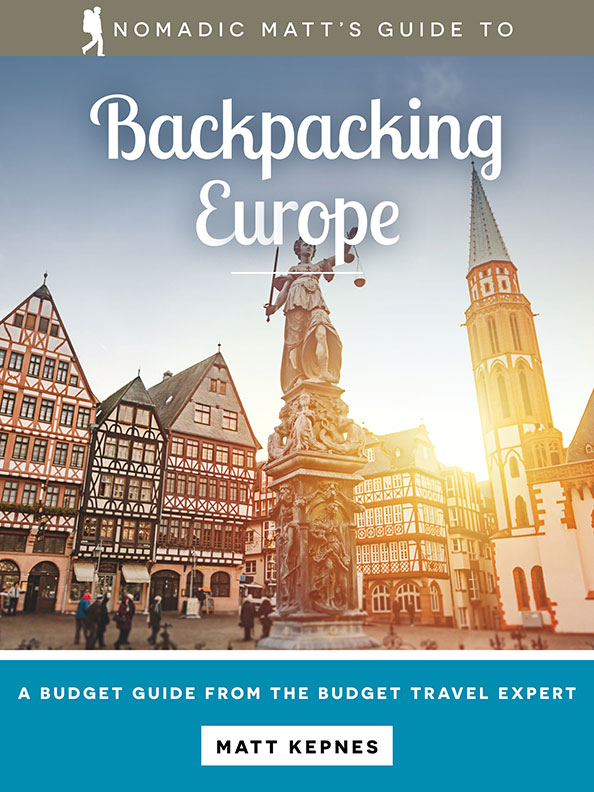
My detailed 200+ page guidebook is made for budget travelers like you! It cuts out the fluff found in other guides and gets straight to the practical information you need to travel while in Europe. It has suggested itineraries, budgets, ways to save money, on and off the beaten path things to see and do, non-touristy restaurants, markets, bars, safety tips, and much more! Click here to learn more and get your copy today.
Book Your Trip to Oslo: Logistical Tips and Tricks
Book Your Flight
Use Skyscanner to find a cheap flight. They are my favorite search engine because they search websites and airlines around the globe so you always know no stone is left unturned!
Book Your Accommodation
You can book your hostel with Hostelworld as they have the biggest inventory and best deals. If you want to stay somewhere other than a hostel, use Booking.com as they consistently return the cheapest rates for guesthouses and cheap hotels. My favorite places to stay in the city are:
Don’t Forget Travel Insurance
Travel insurance protects you against illness, injury, theft, and cancellations. It’s comprehensive protection in case anything goes wrong. I never go on a trip without it as I’ve had to use it many times in the past. My favorite companies that offer the best service and value are:
- SafetyWing (best for everyone)
- Insure My Trip (for those over 70)
- Medjet (for additional evacuation coverage)
Looking for the Best Companies to Save Money With?
Check out my resource page for the best companies to use when you travel. I list all the ones I use to save money when I’m on the road. They save you money when you travel too.
Want More Information on Norway?
Be sure to visit our robust destination guide on Norway for even more planning tips!
